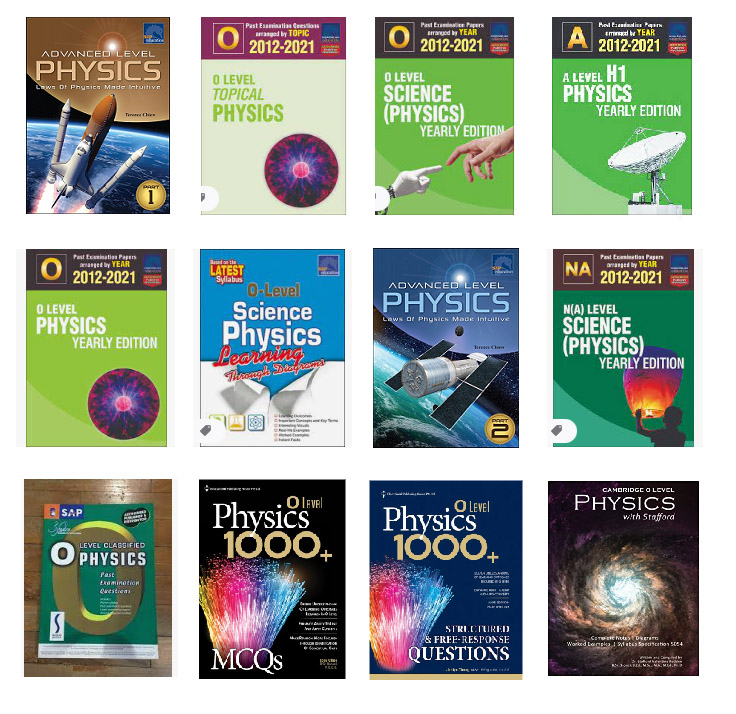
Textbooks for our school children have become much better over the years. Nowadays, authors are adept at using pretty illustrations, mind maps, and clear language to convey Physics concepts. Many of our brighter students are even able to use MOE-approved textbooks for self-study before the teacher covers the material in class.
But are Physics study textbooks adequate?
Many students and parents frequently reflect that exams have gotten more difficult over the years, so much so that the usual variety of examples and practice exercises given in standardized textbooks no longer provide adequate preparation.
Teacher are under a mandate not to let our exams become too easy and allow too many pupils to obtain distinctions, as this would make it hard to differentiate the best students from the average ones, and jeopardize our ability to fairly allocate students to the schools of their choice when the national exams are over. In recent years, fierce competition in schools has also meant that examiners have had to up their game and churn out more difficult papers.
If students found that textbooks provided adequate practice, the market for assessment books would not be as large as it is today. Private tutors would not have to be constantly on their toes and creatively dish out interesting and challenging Physics questions for students to solve.
This is also one reason many students seek tuition — to bridge the gap between what is taught in school and what is frequently tested in their exams.
How about when we pursue Physics at higher education?
Moving up to junior college and higher education is where the textbook situation gets much more interesting. Our local junior colleges do not use standardized textbooks at least for Physics subjects, nor are there any that have been endorsed by MOE. Instead, it is up to each JC to come up with its own internal lecture notes and tutorial problems for students.
At first glance, this seems wasteful, taking into consideration that a common set of lecture notes and tutorials would save many teachers the time and effort needed to produce their own.
However, higher education is more complex. The subject matter involves considerably higher order thinking on the part of both students as well as teachers, and many teachers would like to create materials that reflect their own teaching styles. Each department in a junior college would also like to decide on its own pace of instruction and set the tone according to what it believes is best for the students. Needless to say, students from different JCs can have vastly different needs.
Perhaps there is also a deeper process at work. Instructors often find that creating their own teaching materials is a fulfilling activity — one which also forces them to keep up to date with the latest syllabus and constantly refresh themselves on the many complex concepts that they have to teach.
In universities and in the polytechnics, there is also a conspicuous lack of dependence on textbooks. Even if lecturers have recommended texts for each of their courses, they almost always leave it to students to procure and learn from the textbooks by themselves. With adult students, there is of course far less hand-holding. Even if lecturers sometime teach from the textbook, they have to reorganize and restructure the material to fit the unique demands of their course. Another point to note is that in higher education, textbooks become exponentially bulkier and more expensive, making them out of reach of a great number of students, who are forced to rely on library records or online resources if they wish to study material from those texts.
The short answer therefore is that no matter what level you are studying at, whether primary school or university, textbooks are not sufficient. They always have to be supplemented by additional material provided by the teacher or the tutor, or sourced by the student on his or her own initiative.
